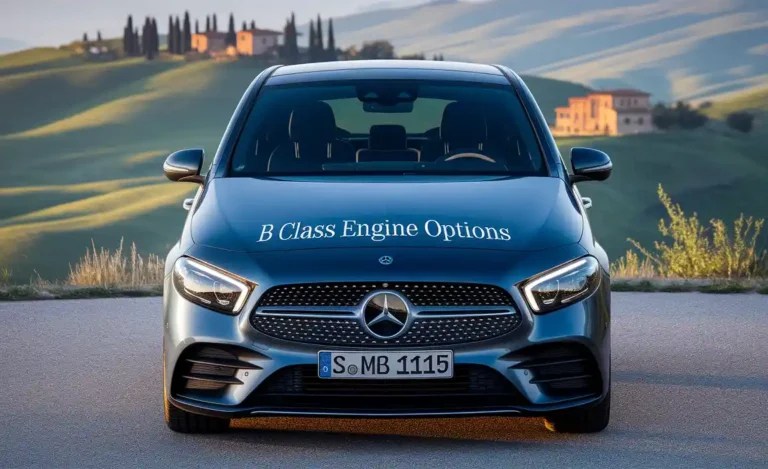B Class Eco Mode: Effortless Fuel Efficiency Unveiled
Unlock remarkable fuel savings with your Mercedes-Benz B-Class’s Eco Mode. This intelligent system is designed to optimize your driving for maximum efficiency without compromising comfort. By subtly adjusting engine and transmission behavior, it helps you use less fuel, saving you money and reducing your environmental impact. Learn to activate and leverage Eco Mode for a more economical and sustainable drive right here.
Hello, fellow Mercedes-Benz enthusiasts! Bryan Bowman here from MercedesBlue. Today, we’re diving into a feature that’s often overlooked but incredibly valuable: the B-Class Eco Mode. For many of us, our Mercedes-Benz is more than just a car; it’s a statement of luxury, performance, and advanced engineering. But what if that engineering could also help us save money at the pump and drive a little greener?
That’s exactly what Eco Mode is designed to do. It’s a smart way to enhance your driving experience, making your B-Class even more sensible for daily use. Let’s demystify this feature, understand how it works, and guide you through using it effectively. Whether you’re commuting daily, planning a road trip, or simply want to be more mindful of your fuel consumption, Eco Mode is your secret ally. Stick around, and we’ll unveil everything you need to know to make the most of it.
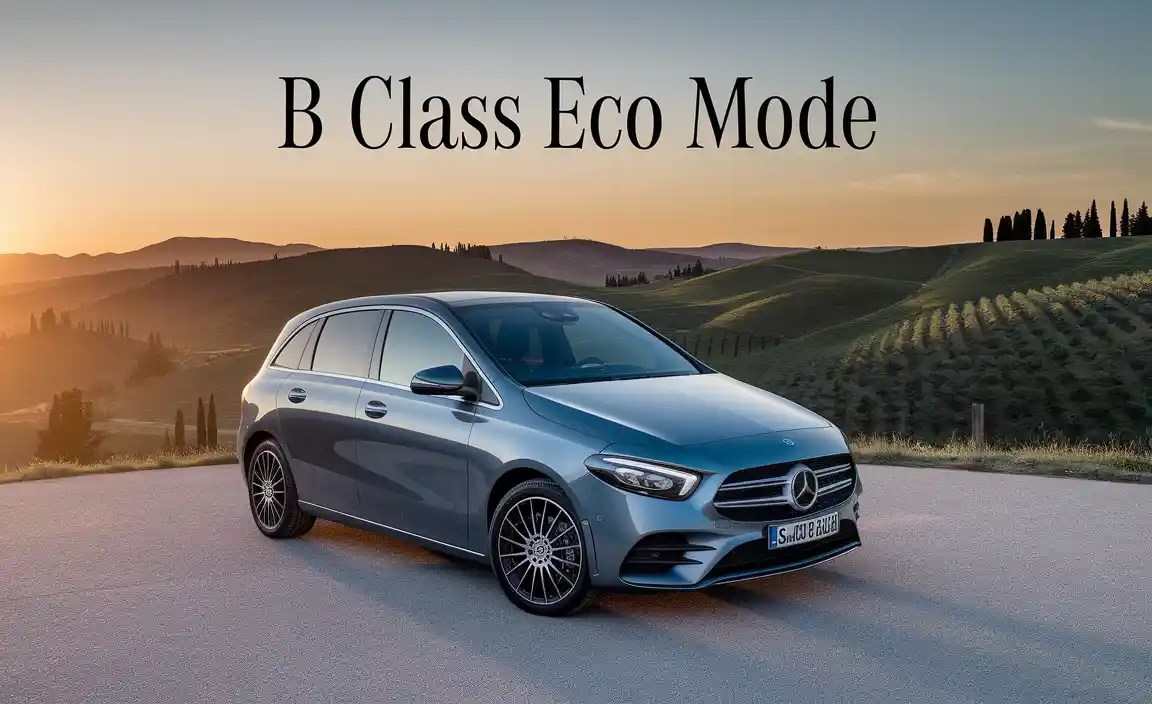
Understanding Mercedes-Benz B-Class Eco Mode
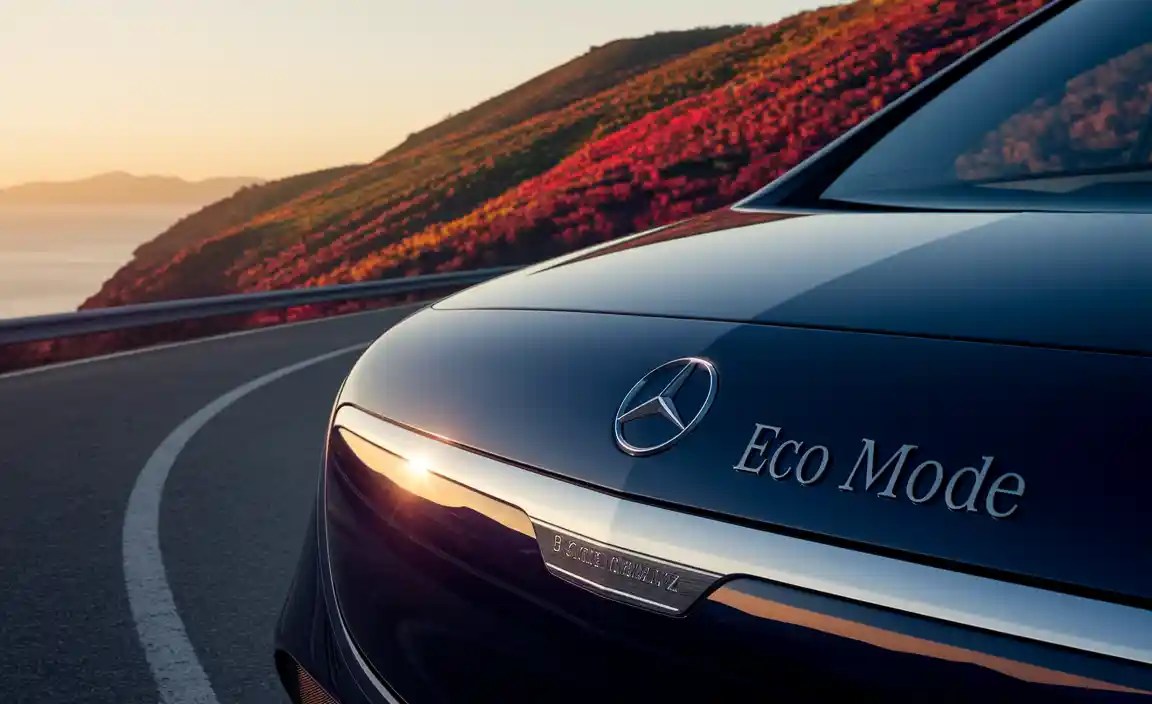
Your Mercedes-Benz B-Class is equipped with a sophisticated drive system. Among its many intelligent features is the “Eco Mode.” This isn’t just a simple button; it’s a comprehensive system that works behind the scenes to make your car more fuel-efficient. Think of it as your car’s way of politely suggesting the most economical way to drive.
When activated, Eco Mode influences several key aspects of your vehicle’s performance:
- Engine Performance: The system may slightly reduce engine power output, making acceleration less abrupt. This doesn’t mean your car is sluggish; it means the power delivery is smoother and less demanding on fuel.
- Transmission Shifts: The automatic transmission is programmed to shift gears at lower engine speeds. This means the engine doesn’t rev as high, conserving precious fuel.
- Climate Control: In some models, Eco Mode can also make subtle adjustments to the climate control system, such as temporarily reducing fan speed or the intensity of cooling/heating when not critically needed. This is especially noticeable when the system is maintaining a set temperature.
- Accelerator Pedal Response: You might notice that the accelerator pedal feels slightly less sensitive. This encourages a more gradual increase in speed, preventing sudden bursts of acceleration that consume more fuel.
- Cruise Control Optimization: If you’re using cruise control, Eco Mode can work with it to maintain speed more efficiently, especially on varied terrain.
The primary goal of Eco Mode is to reduce fuel consumption and emissions, making your B-Class a more economical and environmentally conscious choice. It’s about driving smarter, not necessarily slower, and achieving a better balance between performance and efficiency.
How to Activate and Use B-Class Eco Mode
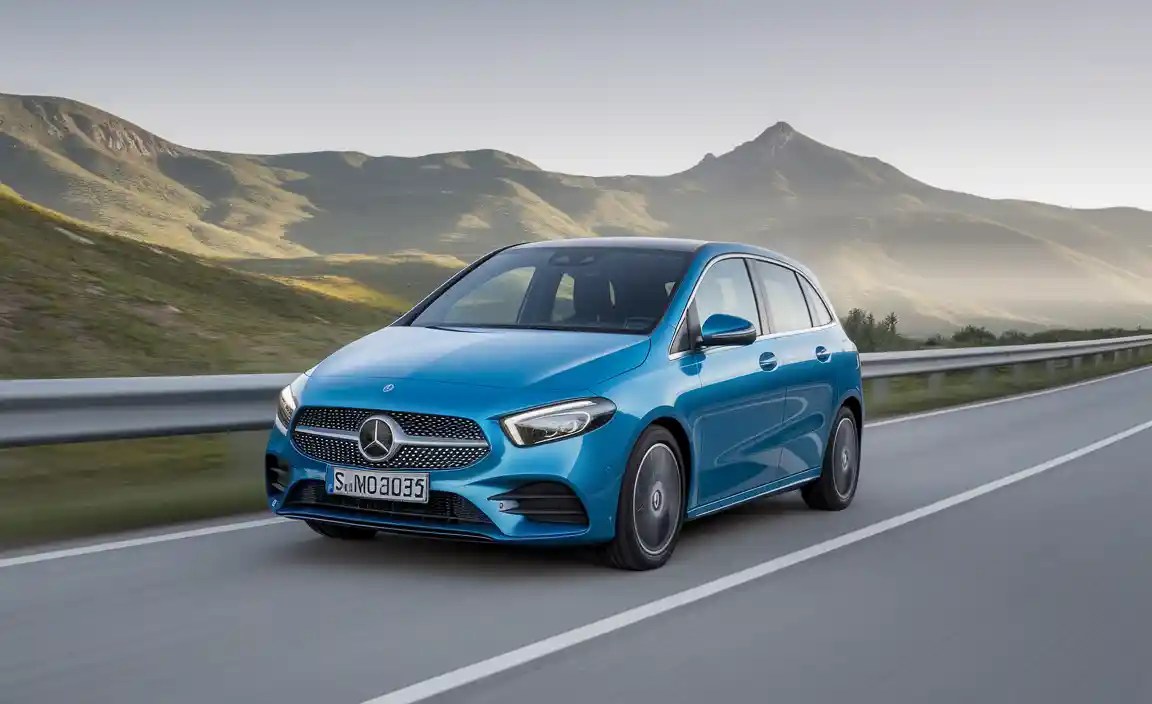
Activating Eco Mode in your Mercedes-Benz B-Class is straightforward. The exact location of the button or setting might vary slightly depending on your specific model year and trim, but the principle remains the same. Most commonly, you’ll find it integrated into the vehicle’s drive mode selector.
Locating the Drive Mode Selector
The drive mode selector is usually found on the center console, near the gear shifter. You might see buttons labeled “C” (Comfort), “S” (Sport), “M” (Manual), and importantly, “E” (Economy) or “Eco.” Sometimes, these options are accessed via a rotary dial or through the infotainment screen.
Steps to Activate
- Ignition On: Ensure your car’s ignition is on. Some vehicles allow you to change drive modes while driving, while others require you to be stationary with the engine running.
- Locate the Selector: Find the drive mode selector interface on your center console or infotainment system.
- Select “Eco” or “E”: Press the button labeled “Eco” or “E,” or navigate through the menus on your infotainment screen to select the Economy driving mode.
- Confirmation: Once selected, an indicator light or a message on your instrument cluster will confirm that Eco Mode is active. You’ll typically see “ECO” illuminated.
Using Eco Mode Effectively
Once activated, Eco Mode is designed to work automatically. However, to maximize its benefits, it’s helpful to adapt your driving style slightly:
- Gentle Acceleration: While the car softens the pedal response, conscious gentle acceleration will yield the best results. Think of it as “tiptoeing” on the accelerator.
- Anticipate Stops: When approaching a red light or stop sign, lift your foot off the accelerator early. Eco Mode helps optimize coasting, and anticipating stops further enhances this effect.
- Smooth Braking: Avoid sudden braking. Smooth, progressive braking is more fuel-efficient and also gentler on your brakes.
- Maintain Steady Speed: On highways, maintaining a consistent speed is key. Let Eco Mode and cruise control assist you in this.
- Utilize “ECO PRO” Benefits (if applicable): Newer Mercedes-Benz models might have an “ECO PRO” mode which goes even further, optimizing energy recovery during braking and coasting through brake-regeneration systems.
Remember, Eco Mode is a tool to help you drive more efficiently. It encourages smoother driving habits that are beneficial for fuel economy, even when the mode is switched off.
The Technology Behind Eco Mode
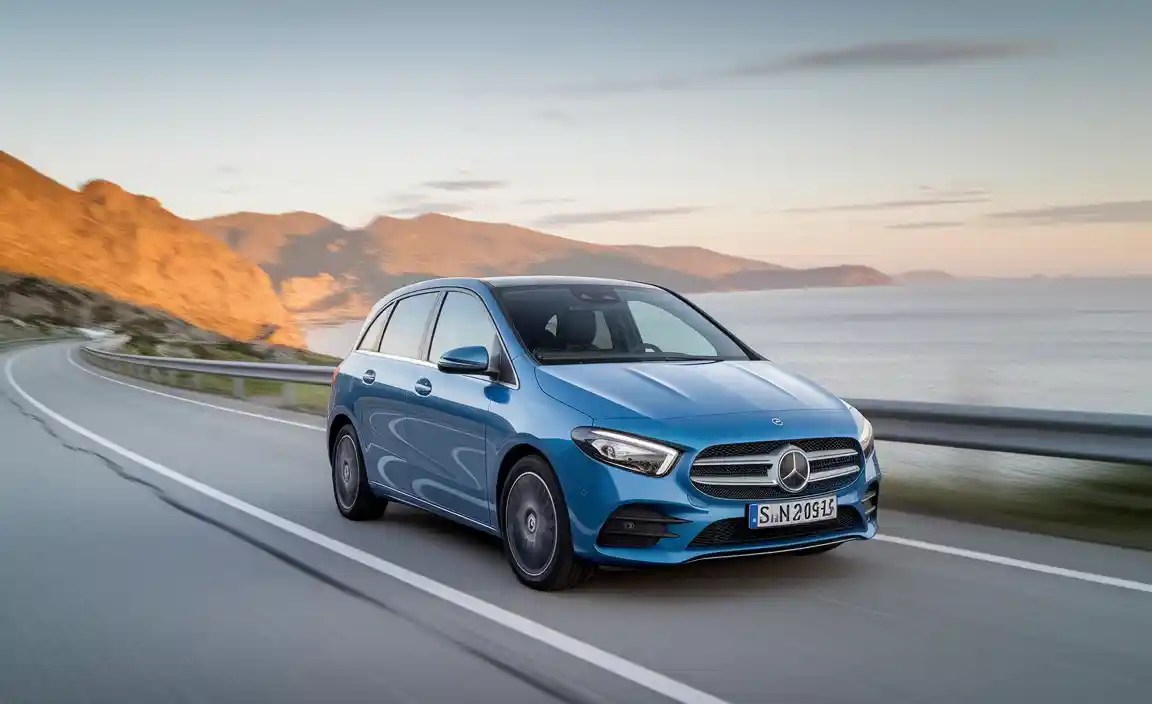
Mercedes-Benz vehicles are renowned for their technological innovation, and Eco Mode is a prime example of this. It’s not just a simple setting; it’s an integrated system that intelligently communicates with various components of your B-Class.
Integration with Drivetrain Management
At its core, Eco Mode is managed by the vehicle’s powertrain control module (PCM) or engine control unit (ECU). This computer receives data from numerous sensors throughout the car and makes real-time adjustments to optimize performance. In Eco Mode, the PCM:
- Adjusts Throttle Mapping: The relationship between how far you press the accelerator pedal and how much the throttle opens is altered. A larger pedal input results in a smaller throttle increase, encouraging smoother acceleration.
- Modifies Transmission Shift Points: The transmission control module (TCM) is programmed to delay upshifts (shifting to a higher gear) and promote earlier downshifts (shifting to a lower gear) when decelerating. This keeps the engine in its most efficient operating range for longer.
- Manages Engine Idling: Some Eco Mode implementations can also influence idle speed, slightly lowering RPMs when the vehicle is stopped or in neutral to save fuel.
Impact on Other Systems
Beyond the direct drivetrain influence, Eco Mode can also communicate with other comfort systems:
- Climate Control: To conserve energy, the system might adjust the compressor clutch of the air conditioning system to cycle more frequently or run at a slightly lower capacity. This typically results in a very subtle change in cooling or heating output that most drivers won’t even notice, but it does contribute to fuel savings.
- Active Suspension (if equipped): Vehicles with adaptive suspension systems might adjust damping rates to favor a more energy-efficient ride, potentially smoothing out road feedback.
The beauty of Eco Mode is its seamless integration. It changes how your car behaves without requiring constant driver intervention or a significant change in driving input. It’s technology working to make your everyday driving more efficient.
Benefits of Using Eco Mode
Switching to Eco Mode on your Mercedes-Benz B-Class offers a range of advantages, extending beyond just saving money at the pump.
Financial Savings
The most immediate and tangible benefit is reduced fuel consumption. By optimizing engine performance, transmission shifts, and other systems, the vehicle uses less fuel for the same distance traveled. This translates to fewer visits to the petrol station and significant savings over time.
Environmental Impact
Lower fuel consumption directly correlates to fewer emissions. By burning less fuel, your B-Class produces less carbon dioxide (CO2) and other greenhouse gases, contributing to a cleaner environment. Driving in Eco Mode is a small but meaningful step towards more sustainable motoring.
Smoother Driving Experience
Many drivers find the driving experience in Eco Mode to be more relaxing. The softened throttle response and earlier, smoother gear changes encourage a more deliberate and less aggressive driving style. This can reduce driver fatigue, especially in stop-and-go traffic.
Extended Range
With improved fuel efficiency, your B-Class will be able to travel further on a single tank of fuel. This means fewer refueling stops on long journeys, offering greater convenience and peace of mind.
Preservation of Vehicle Components
While not a primary design feature, the smoother driving style promoted by Eco Mode can be gentler on certain vehicle components. Reduced aggressive acceleration and braking can mean less wear and tear on the engine, transmission, and brakes over the long term.
Enhanced Driving Awareness
Using Eco Mode can subtly train drivers to be more aware of their driving habits. The need for gentle inputs encourages more foresight and anticipation, leading to a more mindful approach to driving that benefits efficiency regardless of the mode selected.
It’s worth noting that the degree of fuel saving can vary based on driving conditions and how the driver adapts to the mode. However, consistently using Eco Mode in everyday driving scenarios is highly likely to result in noticeable improvements in fuel economy.
Eco Mode vs. Other Drive Modes
Mercedes-Benz offers a variety of drive modes to tailor your B-Class’s behavior to different driving situations and preferences. Understanding how Eco Mode stacks up against these other options can help you choose the right setting for any given drive.
Comfort Mode (“C”)
This is often the default mode and aims for a balanced, comfortable driving experience. It offers a good compromise between performance and efficiency. Acceleration is responsive but not overly aggressive, and gear changes are smooth. Eco Mode typically offers greater fuel savings than Comfort Mode by making more significant adjustments to throttle mapping and shift points to prioritize efficiency even further.
Sport Mode (“S”)
In Sport Mode, the B-Class prioritizes performance. The throttle response becomes sharper, the transmission holds gears longer for higher revs, and gear changes are quicker and more assertive. This mode delivers a more dynamic driving feel but comes at the expense of fuel efficiency. You’ll likely notice a significant increase in fuel consumption compared to Eco Mode.
Manual Mode (“M”)
Manual Mode, often engaged using paddle shifters on the steering wheel, gives you direct control over gear selection. While this allows for precise control, it doesn’t inherently make the car more or less efficient than other modes. Its efficiency depends entirely on the driver’s ability to select optimal gears for fuel economy. Some systems allow you to select a drive mode (like ‘E’) and then use ‘M’ to override it temporarily, meaning you can still benefit from Eco Mode’s underlying programming while selecting gears manually.
Dynamic Select Table Comparison
Here’s a simplified comparison of how different drive modes typically affect your Mercedes-Benz B-Class:
| Drive Mode | Primary Focus | Fuel Efficiency | Performance Feel | Transmission Shifts | Throttle Response |
|---|---|---|---|---|---|
| Eco (“E”) | Maximum Fuel Savings | Highest | Most Restrained | Earlier, Lower RPM Shifts | Least Sensitive |
| Comfort (“C”) | Balanced Comfort & Efficiency | Good | Moderate | Smooth, Balanced Shifts | Balanced |
| Sport (“S”) | Maximum Performance | Lowest | Most Responsive | Delayed, Higher RPM Shifts | Most Sensitive |
| Manual (“M”) | Driver Control | Driver Dependent | Driver Dependent | Driver Controlled | Driver Dependent |
The best mode for you depends on your priorities. For daily commuting where fuel costs are a concern, Eco Mode is an excellent choice. For spirited drives, Sport Mode will be more engaging. Comfort Mode offers a great all-rounder for general driving.
Tips for Maximizing Fuel Efficiency in Your B-Class
While Eco Mode is a powerful tool, it’s part of a larger picture when it comes to maximizing your Mercedes-Benz B-Class’s fuel efficiency. Here are some additional tips:
- Tire Pressure: Ensure your tires are inflated to the manufacturer’s recommended pressure. Underinflated tires create more rolling resistance, forcing the engine to work harder and consume more fuel. You can find the correct pressure on a sticker in the driver’s side doorjamb or in your owner’s manual. Maintaining proper tire pressure is a critical aspect of vehicle maintenance, as recommended by organizations like the National Highway Traffic Safety Administration (NHTSA).
- Reduce Weight: Remove any unnecessary heavy items from your trunk or cabin. The more weight your car has to carry, the more fuel it will consume.
- Aerodynamics: Minimize drag. Keep windows up at higher speeds, and remove roof racks or cargo carriers when not in use, as they significantly disrupt airflow.
- Smooth Driving: This is a cornerstone of fuel efficiency. Avoid aggressive acceleration and hard braking. Anticipate traffic flow and traffic signals. Let your car coast rather than braking at the last moment.
- Vehicle Maintenance: Keep up with regular maintenance. A well-maintained engine with clean air filters, fresh oil, and properly functioning spark plugs will operate more efficiently.
- Short Trips: Cold engines use more fuel. If you have very short trips to make, consider combining them into one longer journey when the engine is already warm.
- Idling: Avoid prolonged idling. If you’re going to be stopped for more than 30 seconds, it’s generally more fuel-efficient to turn off the engine and restart it when you’re ready to go.
- Air Conditioning Use: While Eco Mode can help manage AC usage, be mindful of its power draw. Use it only when necessary. At lower speeds, opening windows might be more efficient, while at highway speeds, the aerodynamic drag of open windows can negate this benefit, making AC potentially more efficient.
By combining the intelligent features of Eco Mode with these fundamental driving and maintenance practices, you can achieve the best possible fuel economy from your B-Class.
Frequently Asked Questions (FAQ) about B-Class Eco Mode
Q1: Will using Eco Mode make my B-Class feel slow?
A: Eco Mode softens the throttle response and optimizes gear shifts for efficiency, which can make acceleration feel less immediate. However, your B-Class still has its full power available when you demand it. It encourages a smoother, more deliberate driving style, rather than making the car inherently slow.
Q2: How much fuel can I realistically save with Eco Mode?
A: The exact savings vary significantly based on your typical driving conditions, your driving style, and your vehicle’s specific configuration. For many drivers, using Eco Mode consistently for city driving can lead to savings of 5-10% or more on fuel consumption.
Q3: Can I use Eco Mode all the time?
A: Yes, you can use Eco Mode for your daily driving. It’s designed to offer a more economical experience under normal conditions. For performance-oriented driving, such as quick overtaking maneuvers or very dynamic driving, you might prefer Sport Mode.
Q4: Does Eco Mode affect the longevity of my car?
A: Generally, no. In fact, the smoother driving style promoted by Eco Mode can be gentler on the engine and transmission, potentially leading to less wear and tear over time compared to aggressive driving habits.
Q5: What happens to my climate control when Eco Mode is on?
A: In some B-Class models, Eco Mode can make subtle adjustments to the climate control system to reduce energy consumption. This might involve less frequent engagement of the AC compressor or slightly reduced fan speeds. The change is usually very minor, so you shouldn’t notice a significant difference in comfort.
Q6: Is there a difference between “Eco” and “ECO PRO”?
A: “Eco” is the general term for economy mode. “ECO PRO” is a more advanced version found in some newer Mercedes-Benz models, particularly those with BMW’s iDrive system. While both aim for efficiency, ECO PRO often integrates more deeply with energy recovery systems and other vehicle functions for even greater optimization.
Q7: Do I need to “break in” Eco Mode or adapt my driving significantly?
A: No, Eco Mode is ready to use immediately. While adapting your driving style to be smoother will enhance its benefits, the system itself will automatically adjust your car’s behavior. The most significant change you might notice is the accelerator pedal’s sensitivity.






